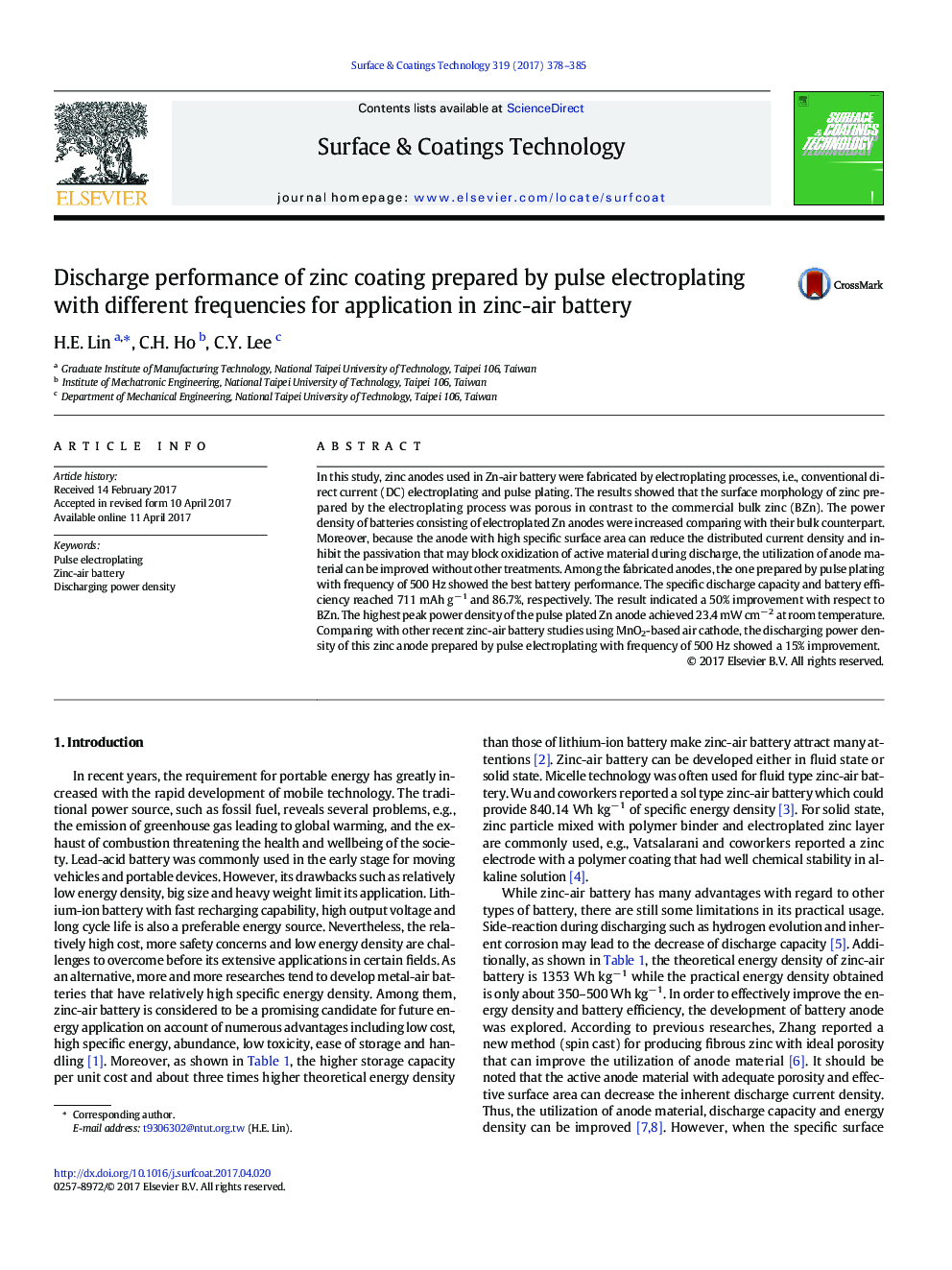| Article ID | Journal | Published Year | Pages | File Type |
|---|---|---|---|---|
| 5465405 | Surface and Coatings Technology | 2017 | 8 Pages |
Abstract
In this study, zinc anodes used in Zn-air battery were fabricated by electroplating processes, i.e., conventional direct current (DC) electroplating and pulse plating. The results showed that the surface morphology of zinc prepared by the electroplating process was porous in contrast to the commercial bulk zinc (BZn). The power density of batteries consisting of electroplated Zn anodes were increased comparing with their bulk counterpart. Moreover, because the anode with high specific surface area can reduce the distributed current density and inhibit the passivation that may block oxidization of active material during discharge, the utilization of anode material can be improved without other treatments. Among the fabricated anodes, the one prepared by pulse plating with frequency of 500 Hz showed the best battery performance. The specific discharge capacity and battery efficiency reached 711 mAh gâ 1 and 86.7%, respectively. The result indicated a 50% improvement with respect to BZn. The highest peak power density of the pulse plated Zn anode achieved 23.4 mW cmâ 2 at room temperature. Comparing with other recent zinc-air battery studies using MnO2-based air cathode, the discharging power density of this zinc anode prepared by pulse electroplating with frequency of 500 Hz showed a 15% improvement.
Keywords
Related Topics
Physical Sciences and Engineering
Materials Science
Nanotechnology
Authors
H.E. Lin, C.H. Ho, C.Y. Lee,
